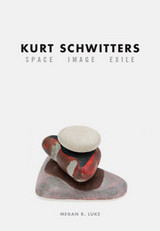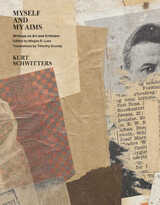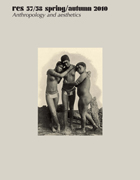3 books by Luke, Megan R.

Kurt Schwitters
Space, Image, Exile
Megan R. Luke
University of Chicago Press, 2014
German artist Kurt Schwitters (1887–1948) is best known for his pioneering work in fusing collage and abstraction, the two most transformative innovations of twentieth-century art. Considered the father of installation art, Schwitters was also a theorist, a Dadaist, and a writer whose influence extends from Robert Rauschenberg and Eva Hesse to Thomas Hirschhorn. But while his early experiments in collage and installation from the interwar period have garnered much critical acclaim, his later work has generally been ignored. In the first book to fill this gap, Megan R. Luke tells the fascinating, even moving story of the work produced by the aging, isolated artist under the Nazi regime and during his years in exile.
Combining new biographical material with archival research, Luke surveys Schwitters’s experiments in shaping space and the development of his Merzbau, describing his haphazard studios in Scandinavia and the United Kingdom and the smaller, quieter pieces he created there. She makes a case for the enormous relevance of Schwitters’s aesthetic concerns to contemporary artists, arguing that his later work provides a guide to new narratives about modernism in the visual arts. These pieces, she shows, were born of artistic exchange and shaped by his rootless life after exile, and they offer a new way of thinking about the history of art that privileges itinerancy over identity and the critical power of humorous inversion over unambiguous communication. Packed with images, Kurt Schwitters completes the narrative of an artist who remains a considerable force today.
[more]

Myself and My Aims
Writings on Art and Criticism
Kurt Schwitters
University of Chicago Press, 2021
Kurt Schwitters was a major protagonist in the histories of modern art and literature, whose response to the contradictions of modern life rivals that of Marcel Duchamp in its importance for artists working today. His celebrated Merz pictures—collaged and assembled from the scrap materials of popular culture and the debris of the studio, such as newspaper clippings, wood, cardboard, fabric, and paint—reflect a lifelong interest in collection, fragmentation, and abstraction, techniques he also applied to language and graphic design.
As the first anthology in English of the critical and theoretical writings of this influential artist, Myself and My Aims makes the case for Schwitters as one of the most creative thinkers of his generation. Including material that has never before been published, this volume presents the full range of his prolific writing on the art and attitudes of his time, joining existing translations of his children’s stories, poetry, and fiction to give new readers unprecedented access to his literary imagination. With an accessible introduction by Megan R. Luke and elegant English translations by Timothy Grundy, this book will prove an exceptional resource for artists, scholars, and enthusiasts of his art.
As the first anthology in English of the critical and theoretical writings of this influential artist, Myself and My Aims makes the case for Schwitters as one of the most creative thinkers of his generation. Including material that has never before been published, this volume presents the full range of his prolific writing on the art and attitudes of his time, joining existing translations of his children’s stories, poetry, and fiction to give new readers unprecedented access to his literary imagination. With an accessible introduction by Megan R. Luke and elegant English translations by Timothy Grundy, this book will prove an exceptional resource for artists, scholars, and enthusiasts of his art.
[more]

Res
Anthropology and Aesthetics, 57/58: Spring/Autumn 2010
Francesco Pellizzi
Harvard University Press, 2010
This double volume of the renowned international journal of anthropology and comparative aesthetics includes “Aesthetics’ non-recyclable ground” by Félix Duque; “Seeing through dead eyes” by Jonathan Hay; “The hidden aesthetic of red in the painted tombs of Oaxaca” by Diana Magaloni; “A consideration of the quatrefoil motif in Preclassic Mesoamerica” by Julia Guernsey; “Hunters, Sufis, soldiers, and minstrels” by Cynthia Becker; “Figures fidjiennes” by Marc Rochette; “A sacred landscape” by Rachel Kousser; “Military architecture as a political tool in the Renaissance” by Francesco Benelli; “The icon as performer and as performative utterance” by Marie Gasper-Hulvat; “Image and site” by Jas’ Elsner; “Untimely objects” by Ara H. Merjian; “Max Ernst in Arizona” by Samantha Kavky; “Form as revolt” by Sebastian Zeidler; “Embodiments and art beliefs” by Filippo Fimiani; “The theft of the goddess Amba Mata” by Deborah Stein; and contributions to “Lectures, Documents and Discussions” by Gottfried Semper, Spyros Papapetros, Erwin Panofsky, Megan R. Luke, Francesco Paolo Adorno, and Remo Guidieri.
[more]
READERS
Browse our collection.
PUBLISHERS
See BiblioVault's publisher services.
STUDENT SERVICES
Files for college accessibility offices.
UChicago Accessibility Resources
home | accessibility | search | about | contact us
BiblioVault ® 2001 - 2024
The University of Chicago Press









